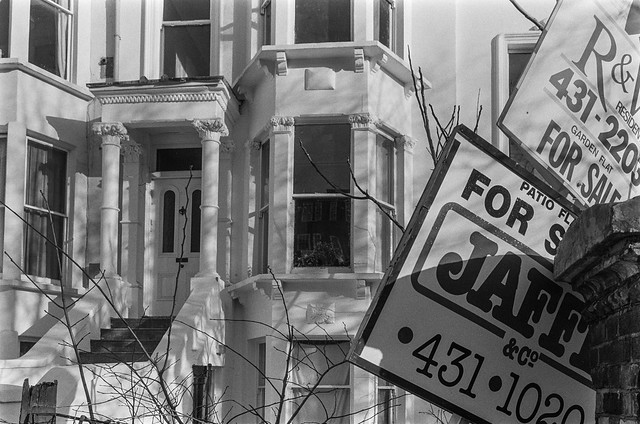Joseph Bros (Textiles) Ltd according to Companies House is dissolved, last filing company reports in 2006, though some online directories still list it at an address in Finchley which appears to be a garage. But the building is still there, with its ground floor occupied until recently by an “avant-garde” cosmetics company claiming inspiration from Salvador Dali claiming a “cosmetic artistic approach to stop time and restore youthful appearance.” Seeing what Dali did with clocks in his ‘The Persistence of Memory’ and other works, I don’t think I’d want to entrust my own ‘clock’ to them.
John Nash’s Park Crescent, built in 1812-21 for the Prince Regent and still owned by the Crown Estate is of course Grade I listed, although only its facades are orginal, everything behind them having been restored in the 1960s. They had been badly damaged by bombing in 1940.
According to John Summerson‘s classic work ‘Georgian London’ published in 1945 (my copy is of the 1947 reprint though bought a little later) “Nash inaugurated the real stucco age with the building of Park Crescent in Parker’s Roman Cement in 1812“. He also comments that “the simple appropriateness of Park Crescent with its Ionic colonnades is beyond criticism“.
All Saints Church in a kind of fantasy gothic called for a very different treatment. It was designed by William Butterfield in 1850 and completed in 1859. Another Grade I listed structure it has been described by Simon Jenkins as “architecturally England’s most celebrated Victorian church” and was pioneering in its use of brick rather than the traditional gothic stone. It set a style that would be much copied for the next 20 years though largely less flamboyantly.
I’ve always felt it would be a good location for a horror film, but is actually a leading centre for Anglo-Catholics in the Church of England.
Quite in contrast is the West London Synagogue, Upper Berkeley St, Marylebone, Westminster, opened in 1870. The congregation had split away from the Sephardi and Ashkenazi synagogues to worship as “British Jews”, adopting a practice based on the “written Torah”. In 1940 they becamae a part of mainstream Reform Judaism.
The architectural style of the building, by Henry David Davis (1838/9-1915) and Barrow Emanuel (1841-1904), is described as Neo-Byzantine, and is certainly unlike their other works I’ve been able to identify. As well as some artisanal blocks of flats for the East End Dwellings Company they also designed the City of London School for Boys still on Victoria Embankment. The synagogue seems to me a slightly odd amalgam of a fortress and a triumphal gateway.
I was amused by the shop sign and not at all sure that I understood it when I took this photograph of what appears to be a rather up-market off-licence. I’m still not sure about it, with a star, arrow and what seemed to me half a lyre with the text ‘E du V’. Doubtless there is some obvious cultural reference which is lost on me, and hopefully someone will point out my ignorance in response to this post.
The reflection in the window clearly indicates it was on a corner of Upper Berkeley St, though I’m not sure on which corner, possibly of Seymour St. It is surely long gone.
The church, listed Grade I, was designed by Robert Smirke and built in 1823-4. There is a very full description of the church in ‘A Topographical and Historical Account of the Parish of St. Mary Le Bone’ by Thomas Smith, printed and published in 1833 by John Smith and available at the Internet Archive. The descirption ends on p105-6 with these comments:
It would have been desirable, if possible, to have procured a site for this church in a more central part of the District than that which has been assigned to it. In short, it should almost seem as if the greatest possible pains had been taken to select a site, in all respects the most inconvenient for the majority of the congregation ; it being surrounded by streets of worse than a second rate description.
If it be said, that the accommodation of the poor has been principally consulted the answer is the poor are always sure to fill the free seats allotted to them wherever the service of the Church of England is decently and impressively performed. The tower and cupola of this church form a tolerably picturesque termination to the view from Cumberland Gate, Hyde Park.
Internet Archive

























































